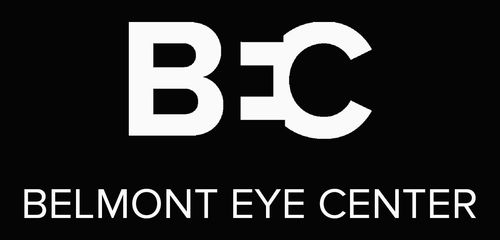Photorefractive Keratectomy (PRK) is a form of eye surgery used to correct eye refractive errors such as myopia (nearsightedness), hyperopia (farsightedness), and astigmatism. PRK, sometimes also called superficial LASIK, is the original form of laser eye surgery. PRK is a type of laser eye surgery, similar to LASIK, that treats vision problems by changing the shape of the cornea, your eyes clear, protective outer layer.
Photorefractive keratectomy (PRK) is a type of laser eye surgery that lessens the need for corrective eyewear by changing how your eyes focuses light onto the retina. The goal of photorefractive keratectomy (PRK), similar to LASIK and other vision-correction procedures, is to correct refractive errors in the eyes and to decrease reliance on visual aids such as glasses or contacts. Photorefractive Keratectomy (PRK) and Laser-Assisted Subepithelial Keratectomy (or Laser Epithelial Keratomileusis ) (LASEK) are laser eye surgical procedures intended to correct the persons eyesight, reducing the dependency on glasses or contact lenses.
Photorefractive keratectomy works by altering the cornea with lasers, so light entering the eye is properly focused on the retina, providing clearer vision with no need for contacts or glasses. PRK can be recommended even if you suffer from dry eyes or thin corneas, both of which may lead to complications after LASIK, a more common refractive surgery. If you have dry eyes or thin corneas and would like refractive surgery, PRK might be a good option for you.
This is because certain other types of refractive surgery, like LASIK, are not recommended if you have dry eyes or thin corneas. These problems often can be improved by glasses, contacts, or further laser surgery. This type of eye refractive surgery may not work, though these cases are rare.
If your eyes refractive error is unstable or changes, a different type of eye surgery might be recommended by your health care provider. Before you decide whether PRK surgery is right for you, an ophthalmologist will check your eyesight and assess your eyes level of refractive error. Depending on the individual eye health, you may need to have PRK surgery on one eye or both.
PRK surgery is best suited for patients who have thin, scarred, or uneven corneas, which make them not a good candidate for LASIK. Patients who have a thin cornea can be good candidates for PRK, as there is no flap created in the procedure.
This is because PRK does not involve cutting a flap into your cornea, as LASIK and similar surgeries do. The PRK procedure can be preferred over LASIK for some patients who have thinner corneas or who have uneven surface of their corneas, as PRK breaks up less corneal tissue than LASIK, which is comparable to the surgery. The PRK procedure is more technically straightforward than LASIK, and it uses the same state-of-the-art laser treatment systems.
Like LASIK, PRK requires a consultation with your eye surgeon prior to your surgery, in order to evaluate your overall eye health and to make sure that you are a good candidate for this procedure. PRK) can be performed on one eye at a time, in order to evaluate the outcome of the procedure and ensure proper vision throughout the healing process. PRK helps to correct the eyes refractive errors, which allows for improved vision and greater attention to things, whether it is nearby, distant, or when reading.
While both procedures work on the epithelium above the cornea, PRK completely removes it, whereas LASEK brushes material off during surgery, then puts it back in for healing following the laser surgery. During PRK, the corneas outermost layer is removed entirely, providing the needed access to the parts of the cornea that must be altered. The outermost layer of epithelial cells of the cornea is removed using either a blade, special brushes, an alcohol solution, or lasers.
With PRK, a surgeon removes and discards the corneas outer epithelial layer, leaving the eye exposed, before the cornea is altered. Simply removing a small section of the eyes outer layer, rather than cutting off the flap, allows the laser to reshape the cornea nearer to the surface, keeping a greater amount of corneal thickness intact than in LASIK.
Like LASIK, PRK uses a programmed, guided laser to alter your corneas shape in order to remove myopia, hyperopia, or astigmatism. PRK) is different from LASIK (laser assisted in-situ keratomileusis), a form of laser eye surgery that creates a permanent flap in the deeper layers of the cornea. During photorefractive keratectomy (PRK), an eye doctor uses a laser to alter the shape of the cornea, so the light entering the eye is properly bent and focused onto the retina.
PRK can be performed as a refractive correction procedure to correct residual refractive errors following corneal transplantation, penetrating keratoplasty, LASIK, cataract surgery, or other eye surgery. Photorefractive keratectomy (PRK) can be an option for selected patients for whom LASIK is not a viable option, such as patients with thin corneas, anterior basement membrane epithelial dystrophy (due to a risk of epithelial overgrowth), history of recurrent erosion, anteroposteriorly placed scleral buckles, or corneas that are extremely flat or extremely steep. In addition, if you have thin corneas and cannot get LASIK, you are probably an appropriate candidate for PRK, which does not require the removal of much corneal tissue. PRK is also good for patients with active lifestyles, as creating a corneal flap leaves that part of your eye more susceptible to injuries.
Because we allow the outer layer to grow and repair itself through PRK, rather than replacing the preexisting tissue, patients with PRK generally have fewer cases of dry eyes after PRK. As with other forms of refractive surgery, keratoconjunctivitis sicca, colloquially called dry eyes, is the most common PRK complication, and it may be permanent.
